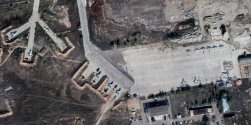Both the A-50 and the IL-22 were operating near the Azov Sea and intercepted within 10 minutes of one another. All collected evidence to date is the A-50U was hit while airborne, broke apart and crashed with all 15 on-board killed, while the IL-22 managed to make an emergency landing with a severely damaged plane.
That was the result, some reports and analysts have suggested, of a one-two deception by Ukraine’s air defense units utilizing a Ukrainian S-300 (SA-10) battery in concert with a US-made Patriot PAC-3 unit.
According to some reports,
the S-300 crew likely switched on their radar until the emissions were reported by a VKS Su-34 fighter, which then notified the A-50U and IL-22M to vector towards those coordinates to gather targeting information.
The S-300 radar then provided the location of the Russian airborne targets and handed off that data to the Patriot crew. When the time was right, the
Patriot crew switched on its radar for only a few seconds —
an adequate interval to receive the S-300’s targeting data, but too short of a time for Russian receivers to identify the US-made system.
The Russian planes,
lured in by the S-300, were then targeted by the Patriot system.
Once the Ukrainian Patriot fired its missiles and hit their targets, both the S-300 and PAC-3 batteries shut down all radar transmissions and immediately moved from their position. This made it impossible for Russian aircraft to locate them from their emissions and strike back.
The move would be an example of the “
” type of operations that Ukrainian units have been carrying out since 2022. It would also demonstrate that the Ukrainian air force may be willing to risk placing one of its PAC-3 batteries closer than normal to the front lines.

